The Cleveland Indians today announced they'll officially become the Cleveland Guardians. In preparation for rooting for your new hometown team, it's time to read up on the history of the Guardians of Traffic so that you can feel all nice and connected. Because admit it, you know very little about the Art Deco statues and might not even know that they're Art Deco.
10 Things You Should Know About the Guardians of Traffic Statues, Since You Now Root for the Cleveland Guardians Baseball Team
By Scene Staff on Fri, Jul 23, 2021 at 9:00 am
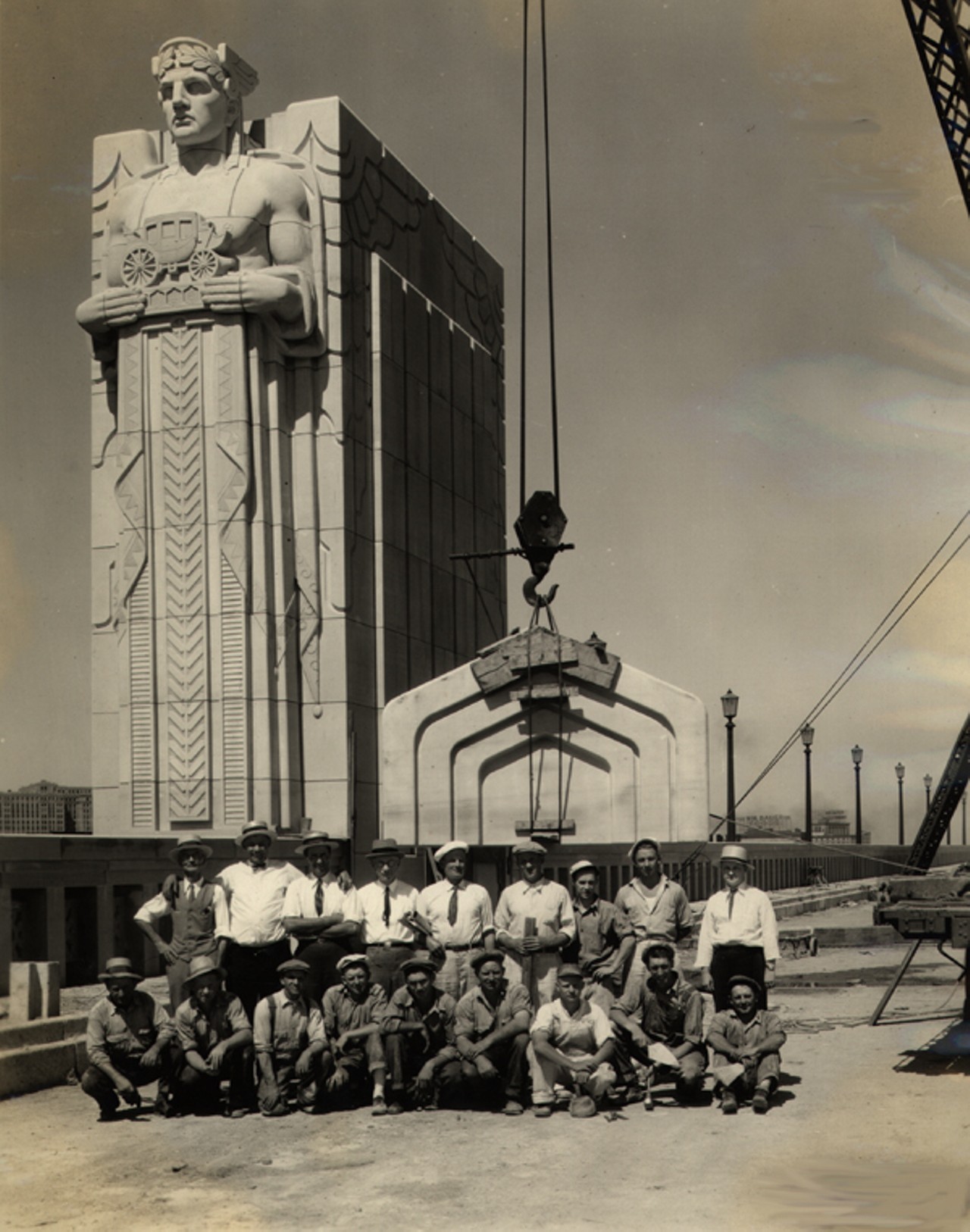
They're super locally made.
The 43-foot-tall sandstone slabs came from Berea.
Photo via CSU Special Collections
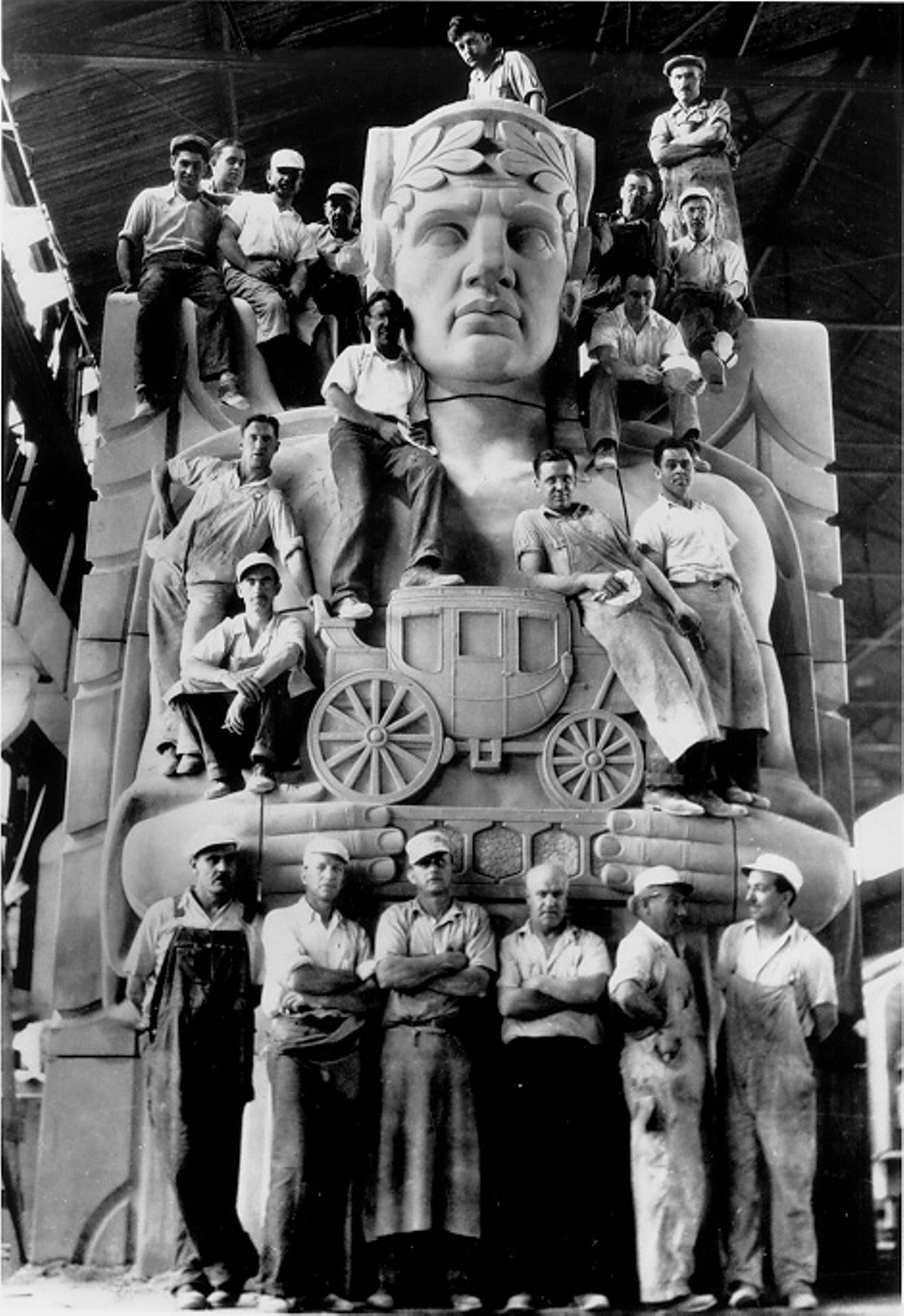
The bridge on which they stand was re-named in the 1980s to honor Bob Hope's father.
Harry Hope, the father of Bob Hope, was one of the stonemasons who worked on the statues in the late 1920s and first years of the 1930s. There's been some confusion whether it was named in honor of the entire Hope family, but most resources point toward Harry Hope.
Photo via the Cleveland Memory Project
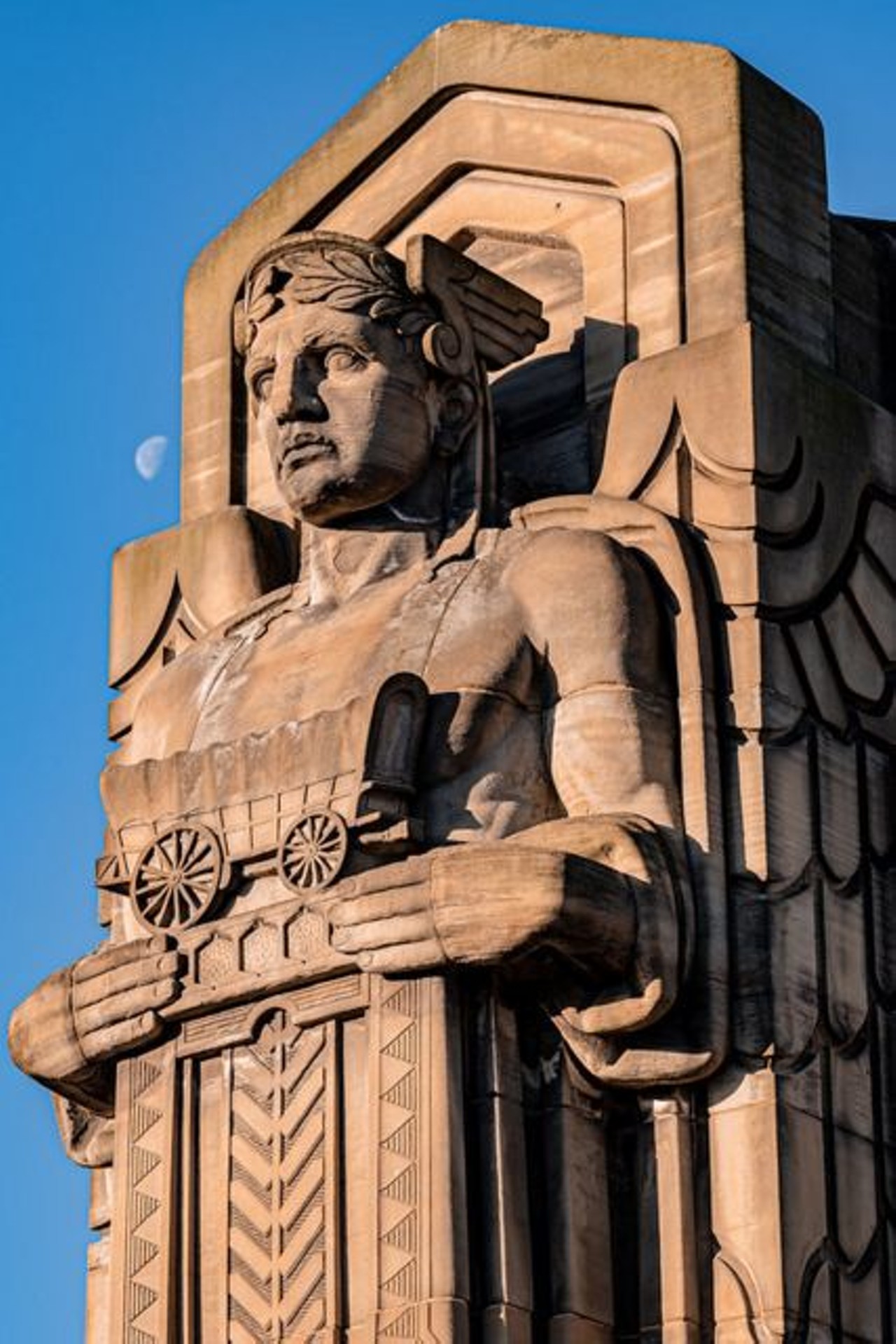
There are eight different Guardian designs, not four.
The four pylons have one Guardian facing in each direction, and each side is different. Engineer Wilbur Watson coined the Guardians of Traffic moniker and wrote they “typify the spirit of progress in transportation.” There's a stagecoach, covered wagon, hay rack, early 20th century car, and four different trucks, with the sculptures' progression representing the evolution of transport. Henry Hering of New York was the sculptor.
Photo by Erik Drost/FlickrCC
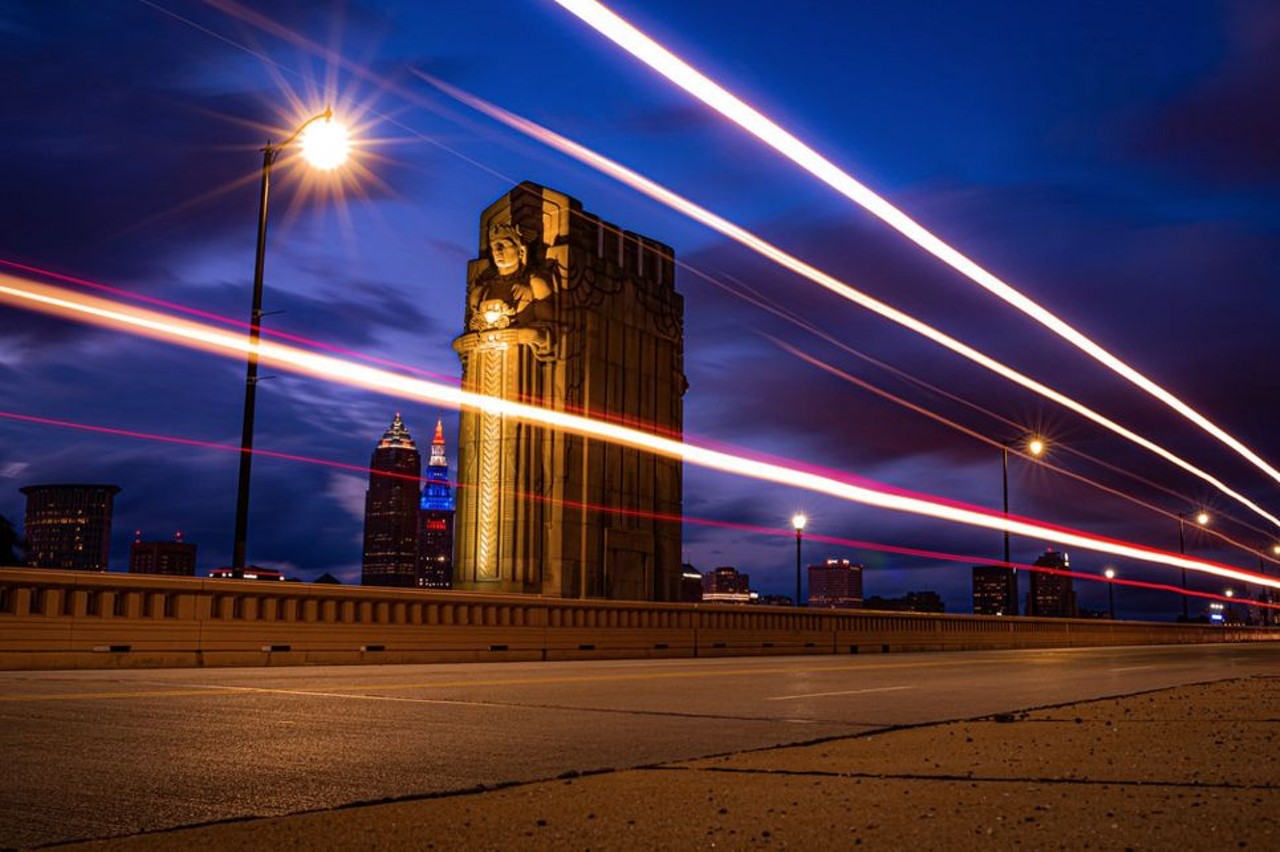
There's long been a battle between the city and the county over who's responsible for changing the lights illuminating the statues.
The statues were so beloved and important that no one cared to stake a claim on making sure you could see them at night. In 2017, Councilman Kerry McCormack said: "We've been communicating with five or six agencies. Figuring out who is responsible for the lighting should be simpler than this, there's no doubt about it. We want them lit. I jokingly said I'd go up there and do it myself."
Photo by Erik Drost/FlickrCC
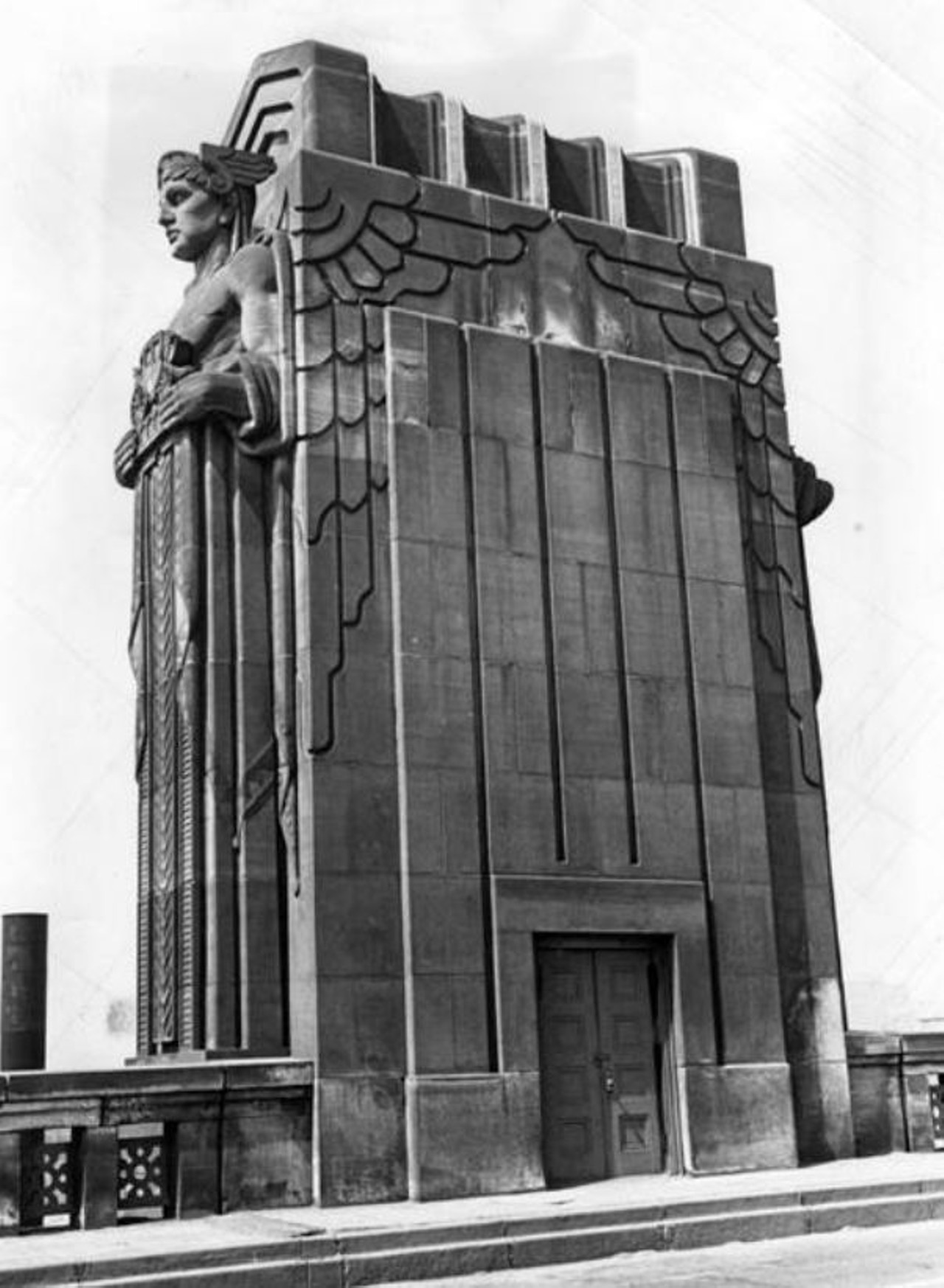
Each pylon has an 8 by 10-foot recess
They were originally used to store brooms and other cleaning supplies when the bridge was hand-cleaned.
Photo via the Cleveland Memory Project
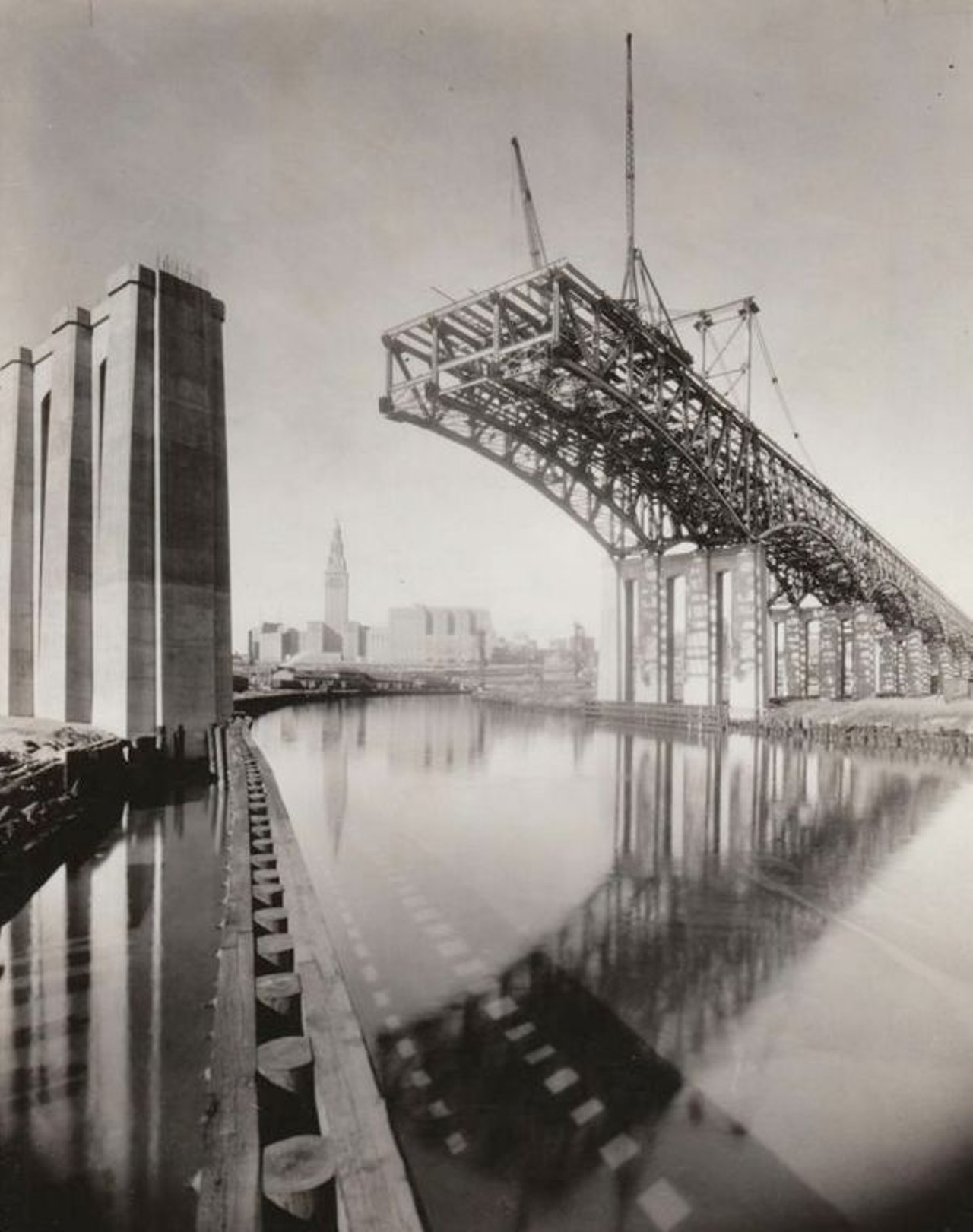
They were made at the beginning of the Great Depression
From Cleveland Historical:
The Lorain-Carnegie Bridge opened in 1932, becoming the second fixed high-level span in Cleveland. It was built in part to relieve traffic on the Detroit-Superior Bridge (the city’s other fixed high-level bridge) which opened in 1917. Construction began on the bridge in 1930, though plans for the bridge date as far back as 1902, when citizens of Cleveland presented a petition requesting construction of a high-level viaduct between Lorain and Central Avenues. In 1927, the city approved a bond issue of $8 million dollars for the bridge’s construction, changing the plan slightly to have the east approach connect with Carnegie instead of Central Avenue. Upon completion, the bridge stood 93 feet above the Cuyahoga River and had a span of 5,865 feet.
Despite frugal measures during the onset of the Great Depression, construction went on.
Photo via CSU Special Collection
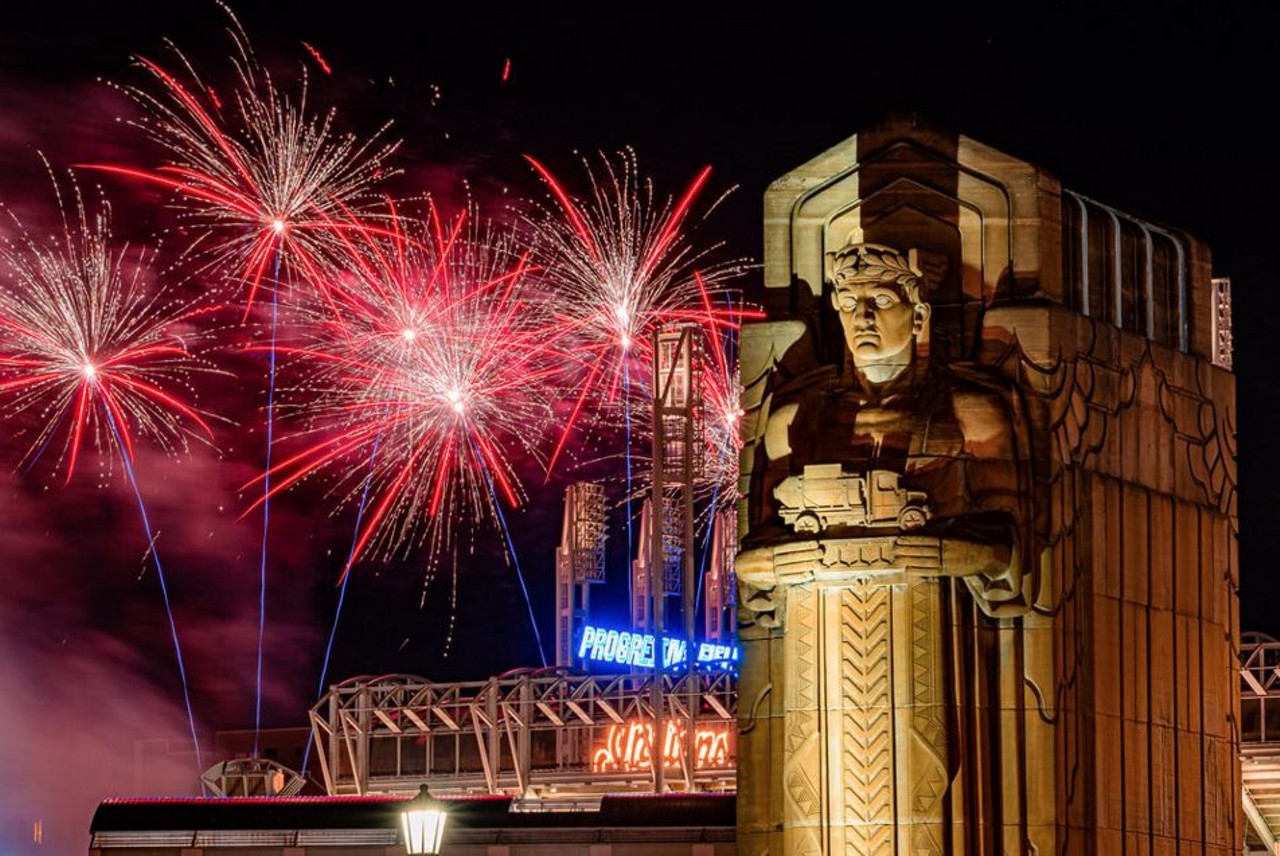
The bridge, including and because of the Guardians, was recognized by the American Institute of Steel Construction as one of the most beautiful bridges of 1932.
And it's still a beaut today.
Photo by Erik Drost/FlickrCC
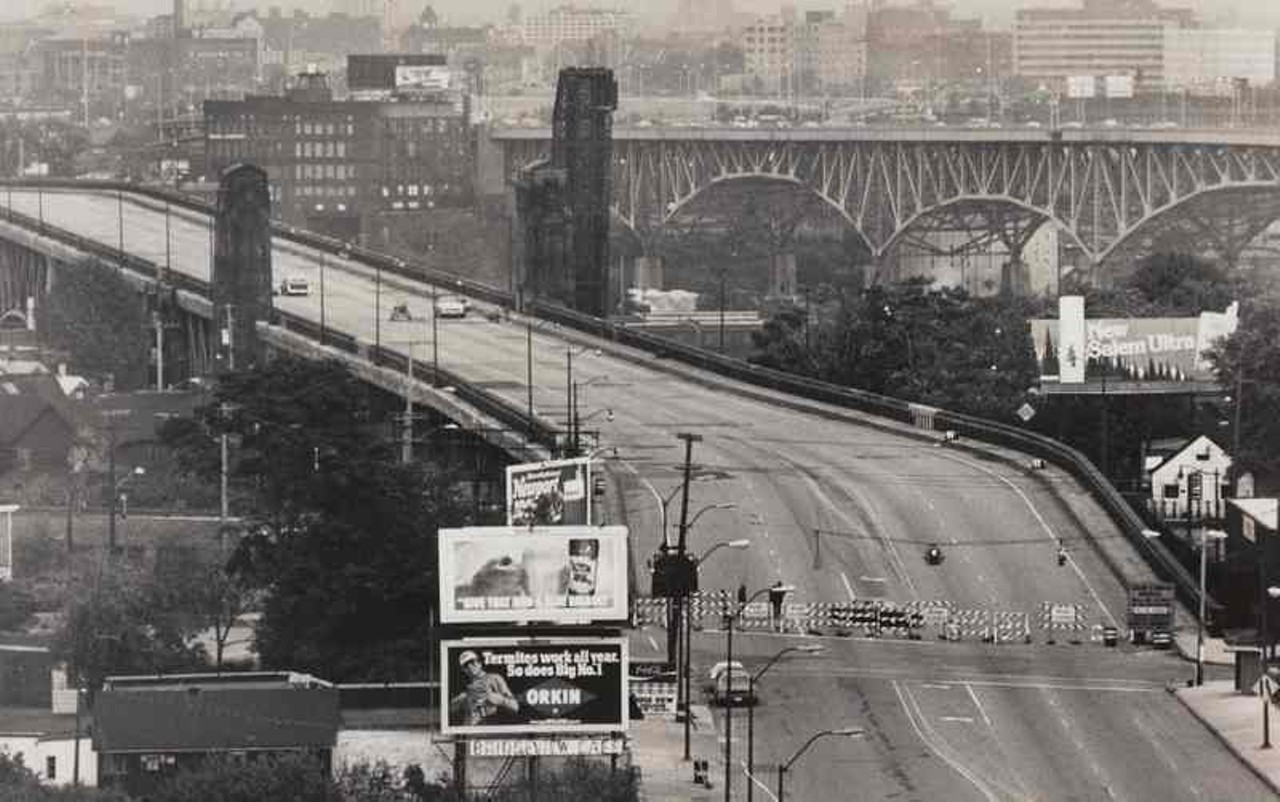
They were almost torn down in the 1970s.
Then Cuyahoga County-engineer Albert Porter wanted to add more lanes to the Lorain-Carnegie Bridge and wanted to tear down the Guardians, which were at that point filthy dirty and badly in need of some TLC. "Those columns are monstrosities and should be torn down and forgotten. There is nothing particularly historic about any one of them. We're not running a May Show here," he was quoted as saying. He lost the battle and they remained.
Photo via CSU Special Collections
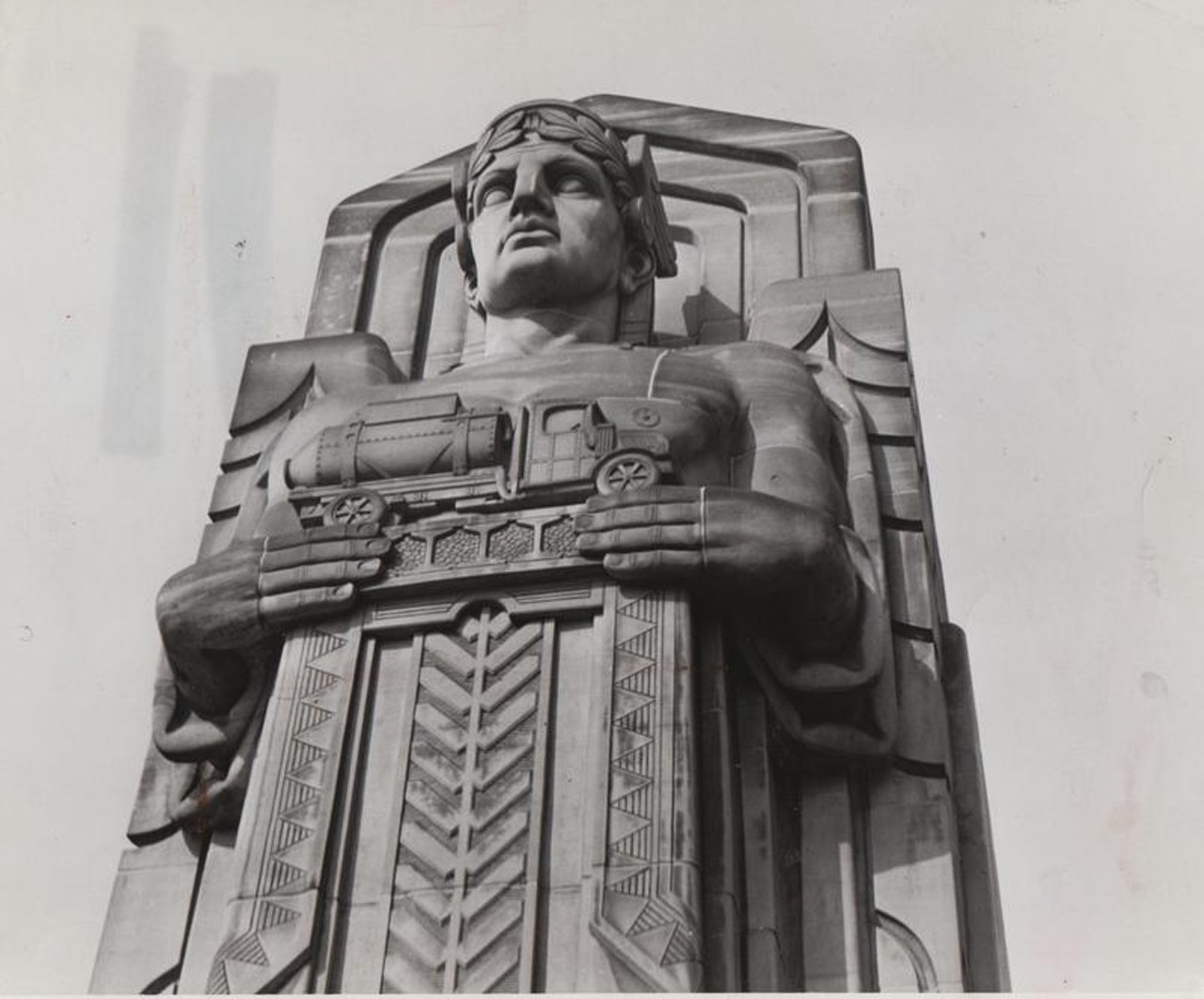
Original designs called for planes and boats.
As Cleveland Magazine has written, "Watson credited Frank Walker of Walker & Weeks, Cleveland’s premier architectural firm of the time, with the guardians’ design. Watson explained what the guardians symbolized, but not what had inspired them." Original sketches from that firm show a boat and a plane in addition to land vehicles. The decision was made at some point to scrap them.
Photo via CSU Special Collections
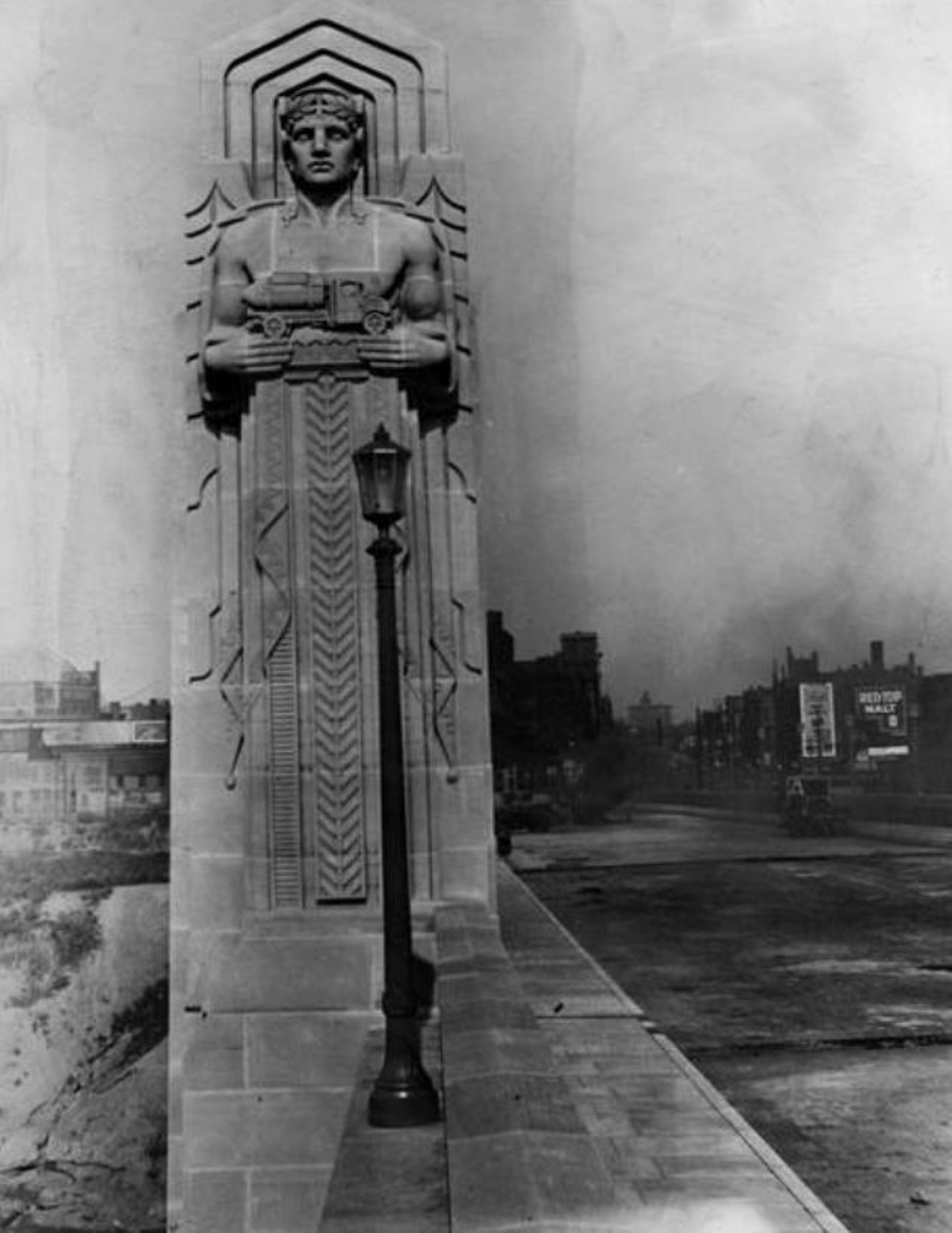
They are indeed the Guardians of Traffic
And not the Guardians of Transportation. Though they've also been referred to as The Lords of Transportation in earlier years by some.
1932 Guardian photo via the Cleveland Memory Project



